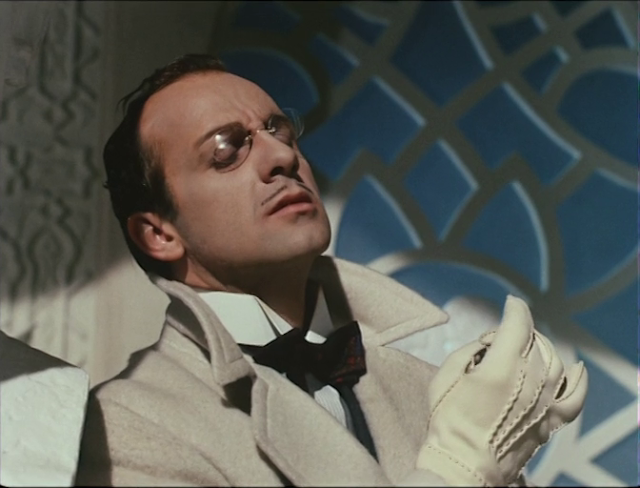 |
| Hisashi Igawa in Pitfall |
The Shopkeeper: Sumie Sasaki
The Miner's Son: Kazuo Miyahara
The Man in the White Suit: Kunie Tanaka
Toyama: Sen Yano
Reporter: Kei Sato
Director: Hiroshi Teshigahara
Screenplay: Kobo Abe
Based on a teleplay by Kobo Abe
Cinematography: Hiroshi Segawa
Production design: Kiyoshi Awazu
Film editing: Fusako Shuzui
Music: Toshi Ichiyanagi, Yuji Takahashi, Toru Takemitsu
Hiroshi Teshigahara's first feature film, and the first in his trilogy of collaborations with writer Kobo Abe that also includes Woman in the Dunes (1964) and The Face of Another (1966), is a fascinating blend of documentary realism and fantasy, a murder mystery and a ghost story. Set in the coal-mining region of Kyushu, the southernmost of the Japanese islands, it follows a miner who travels around looking for work, accompanied by his young son. He is surprised one day to be offered a job by a company he had never worked for before, hired on the basis of a photograph he didn't know had been taken of him. When he reports to the location he finds only a deserted village, whose sole resident appears to be a woman who runs a candy shop. She explains that the mine shut down after a cave-in, and that she's owed some money and is waiting there for word from a man she knows. When he sets out to look for whoever summoned him there, he is followed by a man wearing a white suit and carrying a briefcase. Unnerved by this silent follower, he begins to run, but the man at first keeps pace with him and then draws a knife from his briefcase and stabs the miner to death, then tosses the knife into the nearby marshes. Returning to the village, the man gives the shopkeeper a large amount of money and gives her detailed instructions on what to tell the police when they arrive, including a precise description of the murderer. And then the fantasy begins: The miner's ghost arises from his corpse and discovers he can't communicate with the living. Moreover, when the police and reporters arrive to the crime scene, they identify the victim as Otsuka, the head of a miners' union working nearby. Otsuka is a doppelgänger for the murdered miner. And so the complications mount, as we learn that Otsuka's union is at odds with a rival union headed by Toyama. More deaths take place and other ghosts appear, some, like the miner, filled with frustration that they can't help reveal the truth about their murders. Finally, the only living person who knows what really took place is the miner's young son, who has witnessed the various murders. But the film ends with the orphaned boy setting out on a road that extends off to the horizon, carrying his secrets into an unknown future. Hiroshi Segawa's eloquent black-and-white cinematography and the minimalist, percussive score composed by Toshi Ichiyanagi, Yuji Takahashi, and Toru Takemitsu -- the last-named, a frequent collaborator with Teshigahara, is credited as "sound director" -- give the film its fine, nervous edge.








